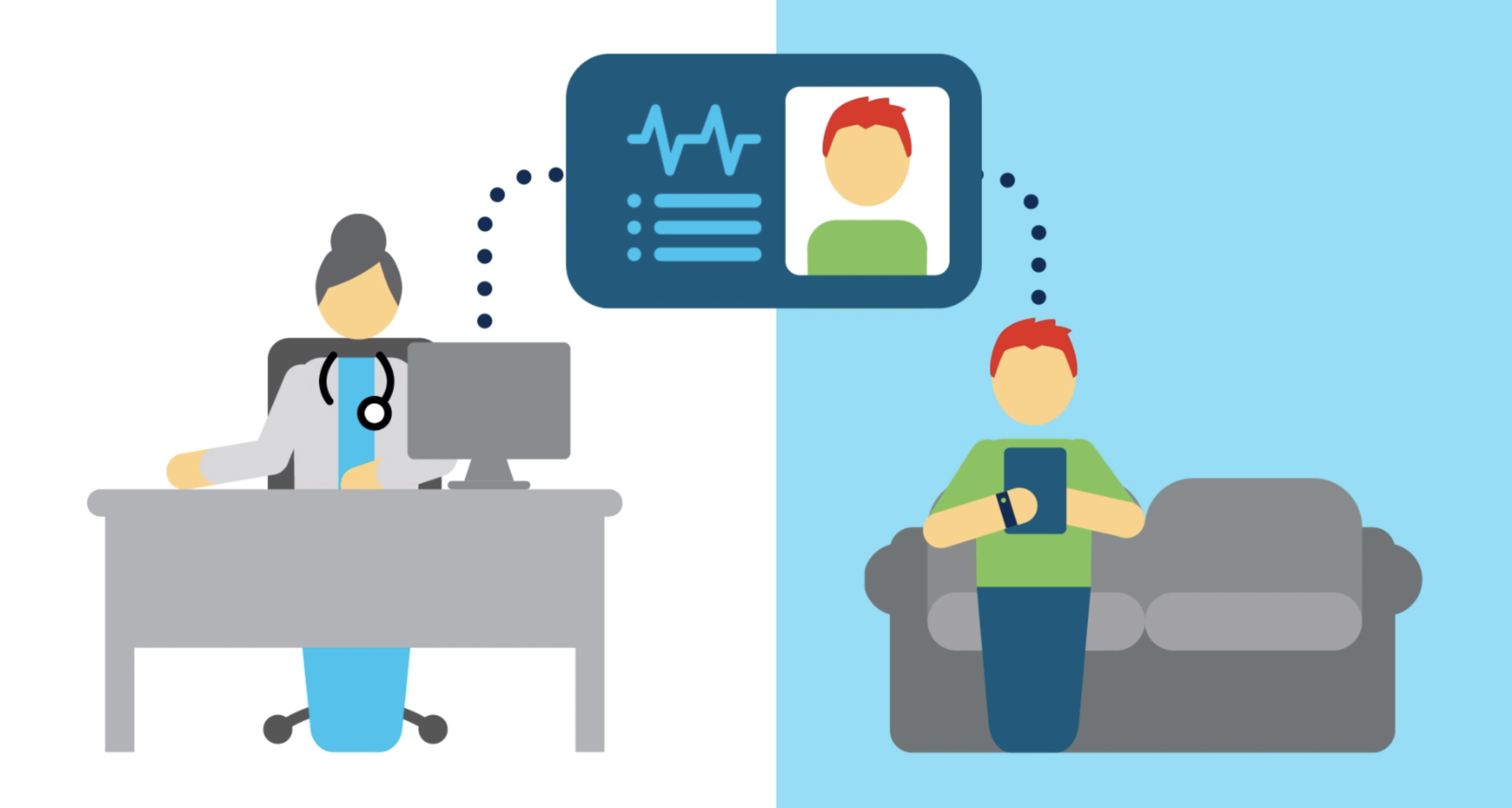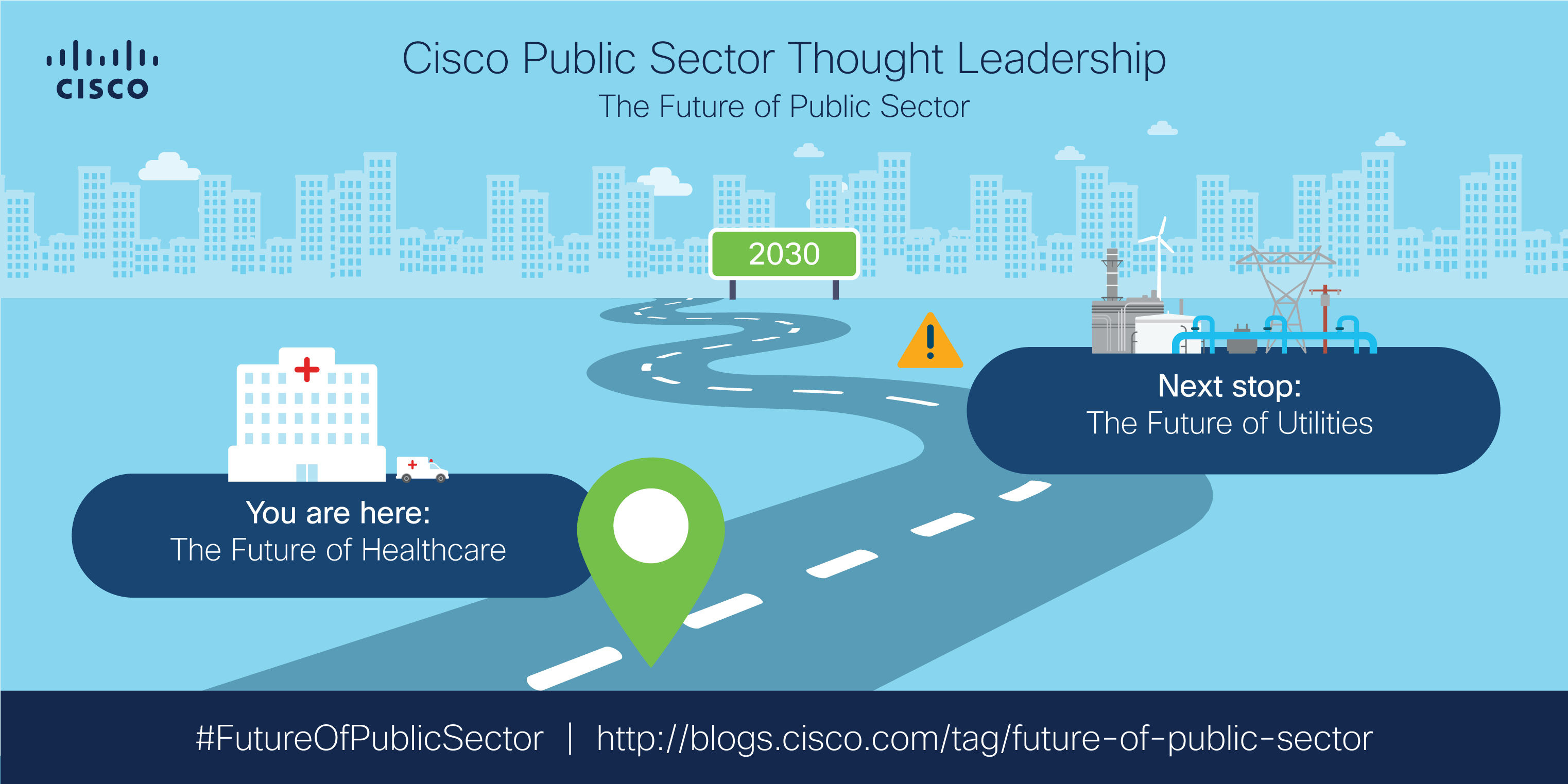































As we continue our journey through Cisco's #FutureofPublicSector series, today we explore the future of healthcareandthe ever-evolving technologies like consumer wearables, artificial intelligence, virtual reality, and robotics that are redefining the way healthcare is delivered.
For decades, technology has enabled better quality research, treatment, and access to healthcare. As a result, citizens around the world are increasingly empowered to focus on self-care, and people are now living longer than in previous generations. But as healthcare improves, the industry is presented with new challenges. For example, the need to provide healthcare to aging populations with more complex, chronic care needs and limited mobility. There is significant work ahead to bridge the gap between healthcare today and what we need it to be in the future to ensure more people around the world have access to the right help, support, and facilities whenever they need it.
Today, healthcare providers continue to look to technology to personalize and improve the patient experience, empower and enable clinical care staff, accelerate operational efficiencies, and drive greater security and compliance measures to protect patients and their data. Here are some trends to expect in the future of healthcare:

Consumer wearables,such as smart watches and fitness trackers, are empowering people to be more in control of their health than ever before. In fact, 7.1 million citizens are already using connected medical devices, and this trend is growing rapidly as consumers become more tech savvy. And, greater connectivity among devices is accelerating the move toward remote monitoring, where patients are able to send data from their wearables and otherremote monitoring devicesdirectly to their doctors in real-time, enabling a much more convenient, seamless, and personalized patient experience.
There's still opportunity to take this much further and expand the capability of wearables beyond basic fitness tracking to support chronic disease management and use of other IoT devices to extend care delivery from hospitals into the home. For example, a Dutch healthcare company, FocusCura, created a 'CVitals' solution that uses Cisco technology to enable patients to measure their vital signs at home and send the data to healthcare professionals remotely, with the option to connect to a doctor via video on iPhones or iPads. And just this year, US telehealth company, American Well, announced that they will leverage Cisco solutions to help convert in-home television sets into a virtual medical office.
By bringing care from the waiting room to the living room, these solutions are transforming the way healthcare is delivered and will help expand access to the elderly, other vulnerable members of the community, and those living in rural areas.

It's not just patients who are benefiting from these technological advances. With an estimated 30% of nurses' time spent looking for equipment, it's no surprise that healthcare organizations are keen to find innovative ways to empower clinical staff and ensure their time is spent doing what they do best -focusing on patients. Greater IoT device connectivity is enabling faster and more accurate data collection, analysis, and location-based insights. These advancements make it easier for medical staff to track and monitor patients in the care setting or at home through remote monitoring, source and use medical equipment more efficiently, and enable easier wayfinding for patients and visitors within a hospital.
Advances inroboticsare accelerating these efficiencies and freeing up nurses' time by performing tasks like delivering medications and dealing with hazardous materials. They can also assist nurses with patient mobility and patient and equipment lifting. Not only can assisted lifting be a more comfortable experience for the patient, it also better protects nurses, who are among the top at-risk occupations for lower back and muscular strains. At Cisco, we continue to enable and advance wireless networks that help healthcare organizations adopt 5G and Wi-Fi6 and develop new capabilities that reduce latency, making remote robotic surgery from increasing distances more feasible too.

Among the most talked-about technologies that will change healthcare in the future isartificial intelligence(AI), where machines can think and act like humans with much greater speed and precision. In fact, AI is expected to help address the 20% of the current unmet clinical demand by 2026. As an example, Gyant, medical AI startup company, is using Cisco technology to develop an AI based chatbot that uses machine learning and decision making to complete virtual triage to assess patient needs, determine the level of medical assistance required, and send a summary report to a call center agent.

As is the case with most industries, the future isn't simply about bringing in new digital solutions. As we become increasingly connected, there will be greater need to use, secure, and govern the data these new technologies produce more effectively and ensure healthcare providers around the world are compliant with government regulations. With new advances inblockchain and biometricsto aid patient security, reduce fraud, and ensure better handling, storage, and sharing of patient data; it's important for healthcare organizations to make sure they are investing in the right infrastructure that will not only future-proof their operations but also empower and enable the staff that will use these technologies to provide care. But how can healthcare organizations understand their current information infrastructure gaps and determine how to fill them?
Healthcare Information and Management Systems Society (HIMSS) partnered with Cisco and others to develop anInfrastructure Adoption Model (INFRAM). The INFRAMprovides a standardized framework to assess the readiness of a hospital facility to support existing and planned process rollouts of digital infrastructure. Use the INFRAM tool today to determine your infrastructure needs today and learn how you can get your organisation ready for the future of healthcare. 
Share your thoughts below and look out for the next installment of our #FutureofPublicSector series where we explore the future of utilities.

 Hot Tags :
Internet of Things (IoT)
#healthcare
Future of Public Sector
#FutureOfPublicSector
Hot Tags :
Internet of Things (IoT)
#healthcare
Future of Public Sector
#FutureOfPublicSector